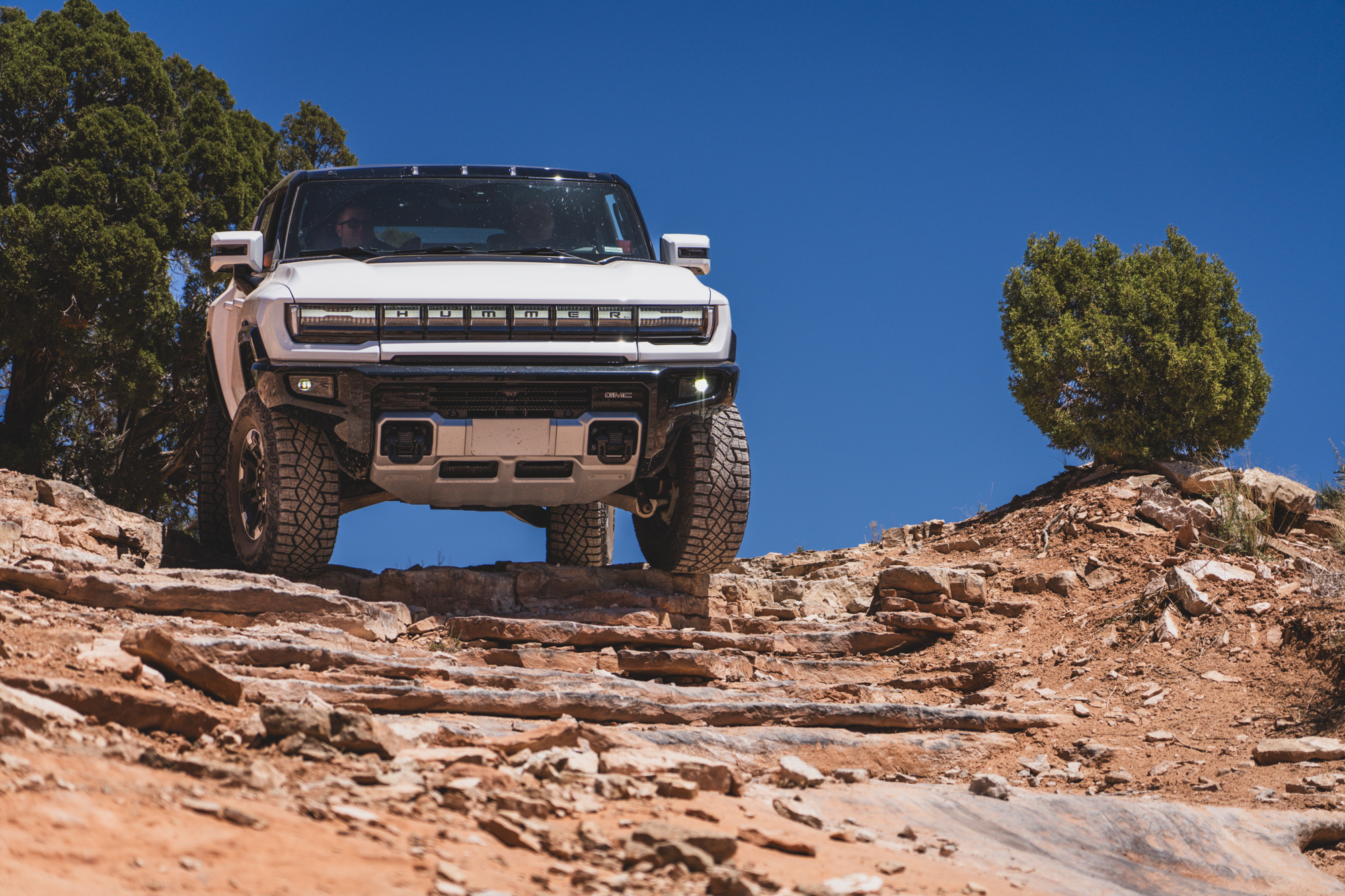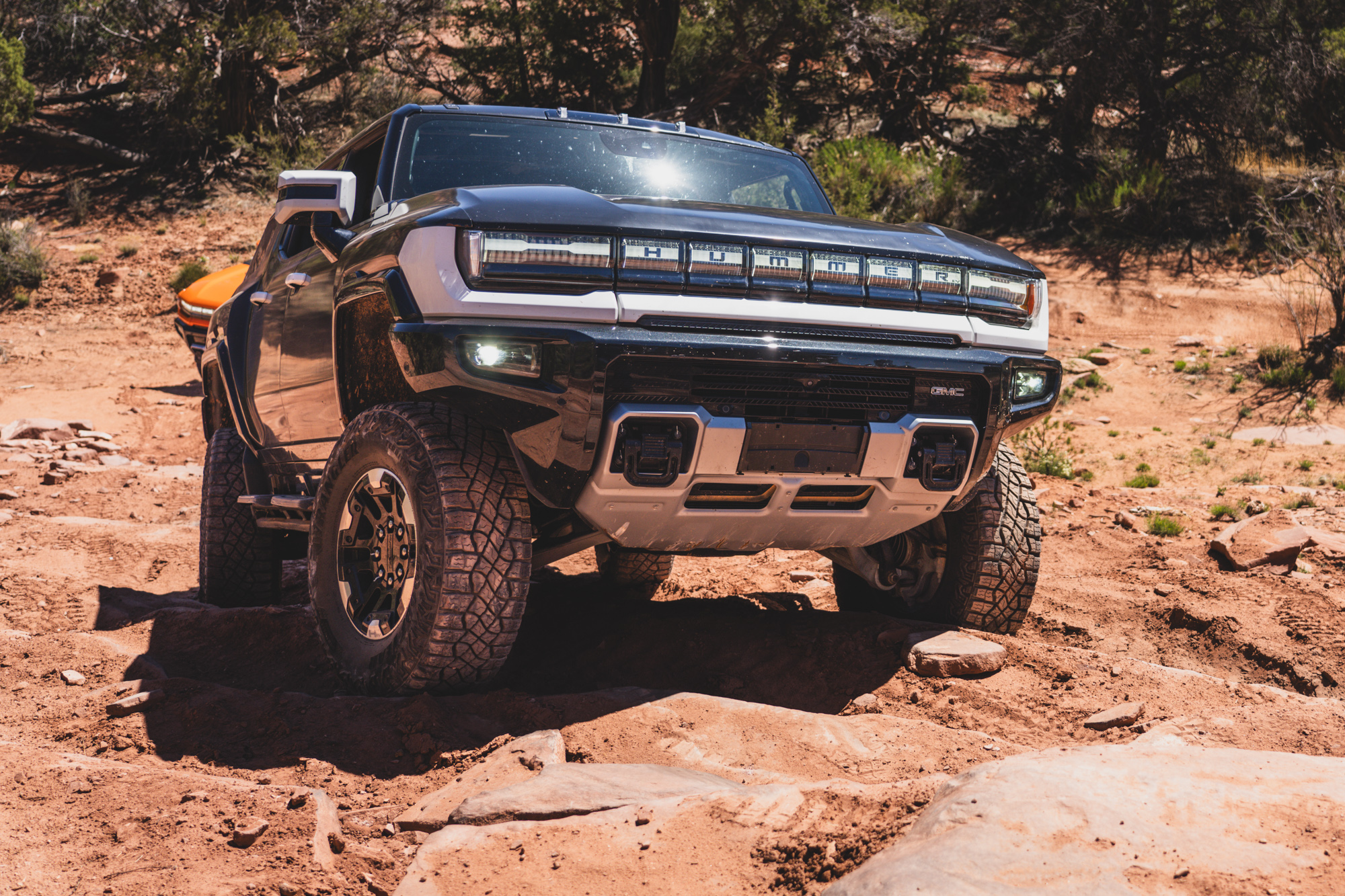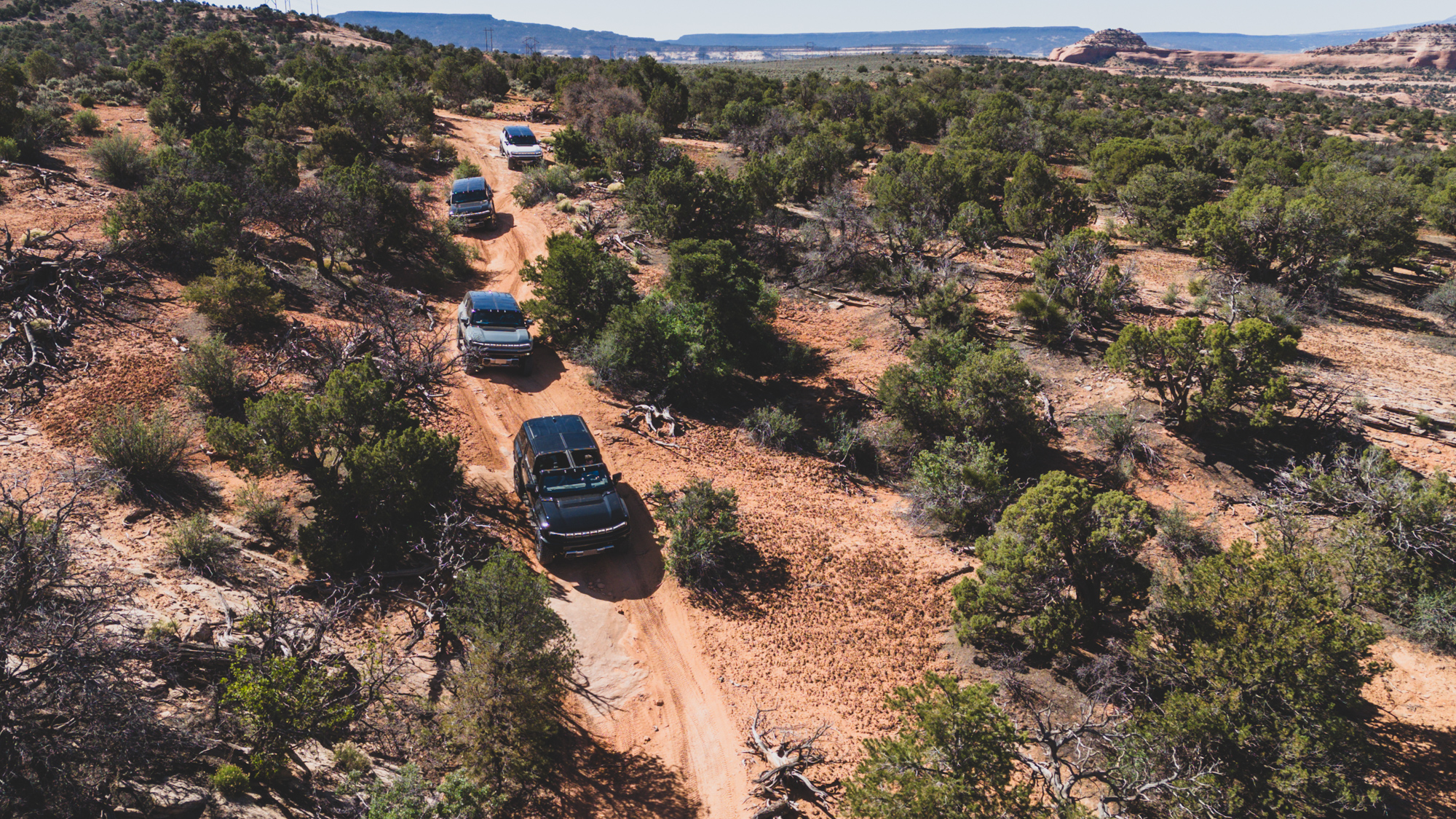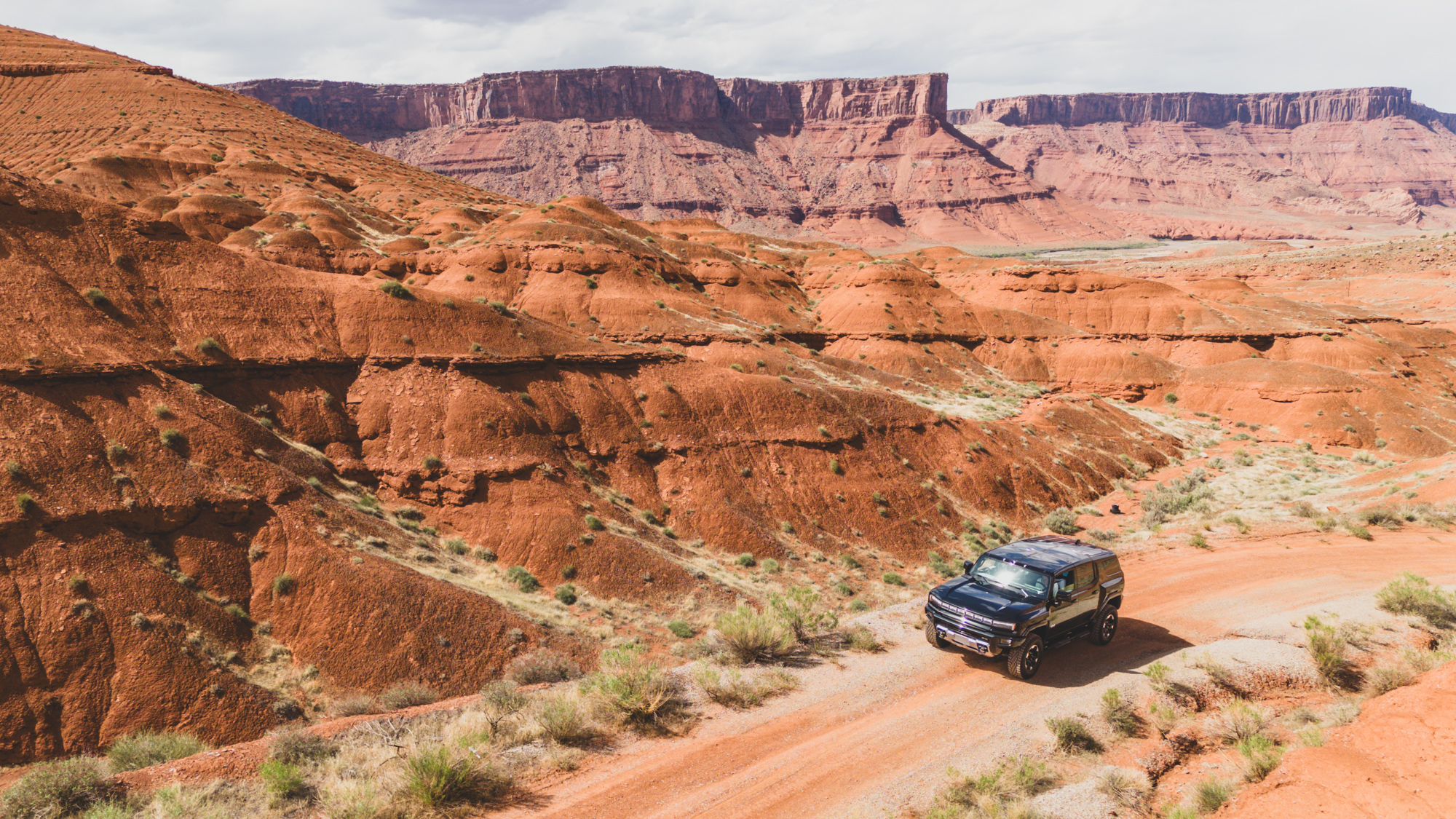Moab has been the testing and playground of capable 4WDs for decades, equal to the Rubicon trail for both range of difficulty and notoriety. The sandstone slickrock of the Colorado Plateau has also become a required milestone for manufacturers, with engineers and test mules descending on the region for validation and tuning programs. All of the early EV Hummer SUV were overland tested in Moab, and it was finally time for automotive journalists also to have a chance to see how the new SUV performs.
The trip worked perfectly for me, as I planned to be in the area for a long overland route through Capitol Reef and the Grand Staircase Escalante. The Hummer testing would not be a manicured test track or something easy like the Fins and Things trail; we would drive all the hard lines of Jaxs Trax, meandering through the Cameo Cliffs. OnX describes the route as “Difficult” with steep climbs, ridges, valleys, tight brush, and beautiful views. Based on our testing criteria, it is at the upper limits of where you would evaluate a completely stock SUV.
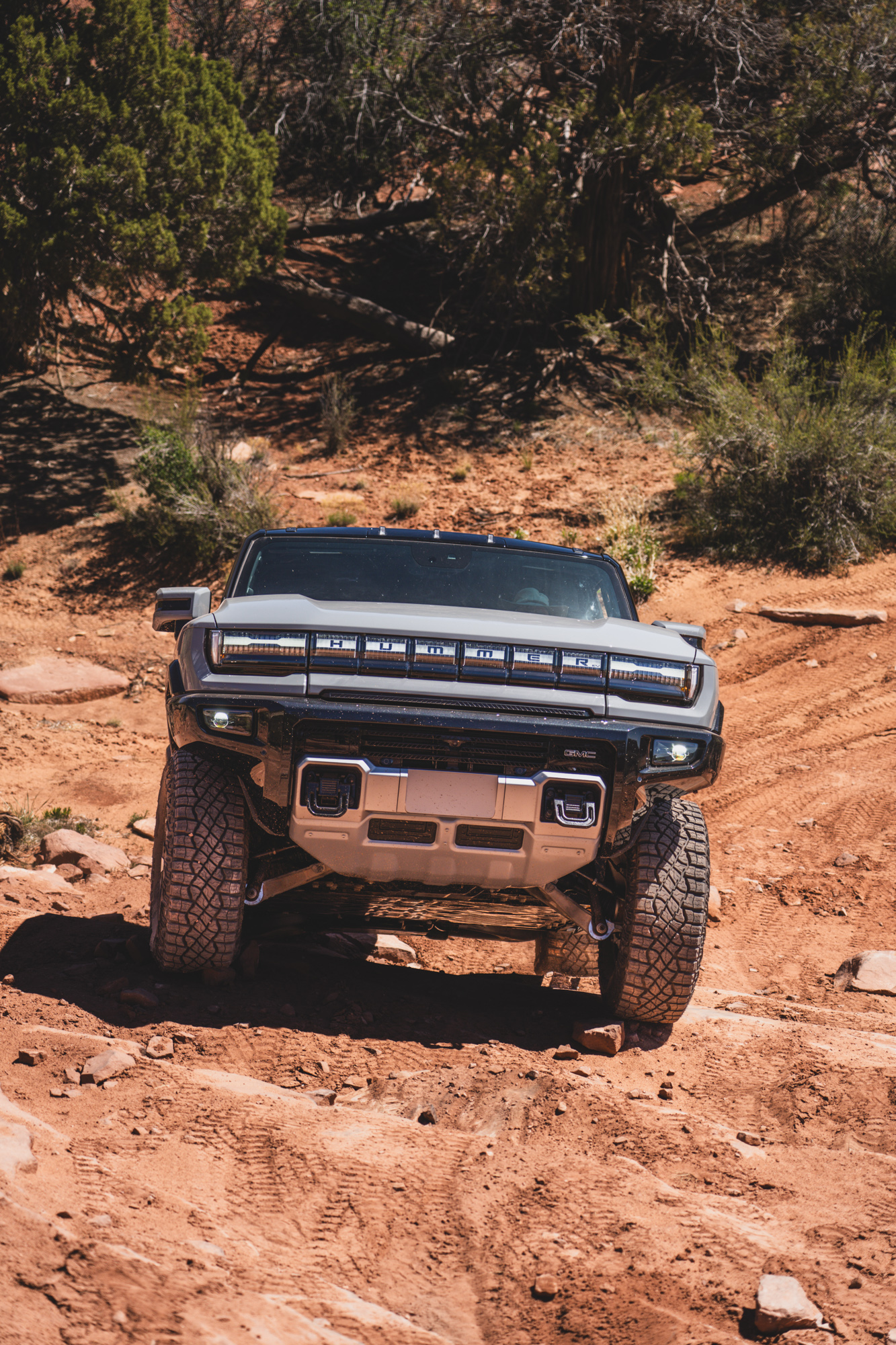

Fortunately, the Hummer SUV has a serious specification list, which includes up to 16 inches of ground clearance, 35-inch tires (37s fit without modifications), 49-degree approach angle, 49-degree departure angle, and four-wheel steering! Impossibly, the turning circle is 35 feet, which is the same as a two-door Wrangler. The rear has two motors to create a virtual locker, and the front axle benefits from a mechanical locker. All of this translates into exceptional technical terrain performance for a stock vehicle and is on par with many modified SUVs.
The start of the Jax Trax trail was a combination of deep sand and tight brush, showcasing the flotation of the 12-inch wide tires and the utility of the four-wheel steering. As expected, the torque and horsepower are instant and prodigious, throwing the driver against the seat and requiring rapt attention to the controls. Off-road mode opens many of the driver aids, allowing for more wheelspin and yaw (oversteer), but it all needs to be treated with respect, as at the limits, it still weighs 9,000 pounds, and the laws of physics apply regardless of the BFG AT attempts to provide grip.


It is easy to sum up the capability of the EV SUV as confidence inspiring, as one journalist after another cleared every obstacle despite their level of off-highway experience. There were only light scrapes on the heavy-duty skid plates and a few situations where a spotter helped guide the line. Nobody got stuck or needed a tow, and I could see no failures or damage. Even on the bigger ledges, the EV exceeded expectations, as that is the most challenging obstacle for an electric motor to overcome without the benefit of a clutch or torque converter (that allows the motor to start turning under load). Without question, the Hummer EV SUV is the best low-speed crawler of any of the production electric 4WDs we have tested.
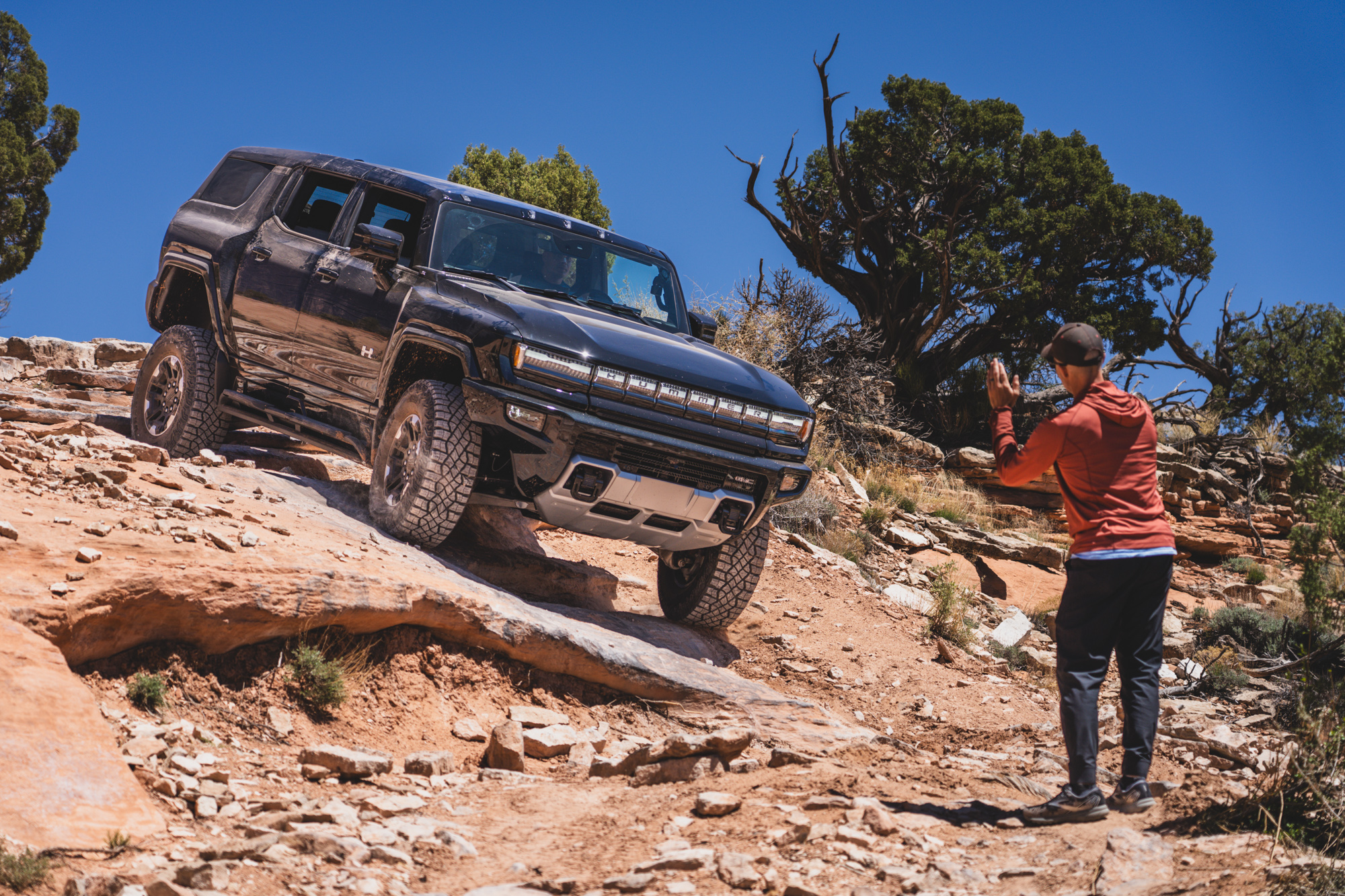
As a travel vehicle, the Hummer is roomy and comfortable, with all of the luxury (including massaging seats) one could ask for. There is a wide load floor behind the second row that will take a few weeks of camping gear and even allow sleeping inside. The removable roof panels do complicate installing a roof rack or large roof tent, but an iKamper Mini will mount above the load area. For those traveling in desert environments, I would recommend not opting for the semi-clear panels as the greenhouse effect is pronounced.

It is also easy to dismiss an EV for overlanding in North America, but that limitation has often been disproven for most conditions. We drove a Hummer EV across El Camino Del Diablo (the longest unsupported overland track in the 48 states). We also traveled in a Rivian R1S to the most remote point in the lower 48 states (Southern Utah). EVs have been driven across Africa and now even to the South Pole. It just takes longer.
Overall, the Hummer EV is a wild, fast, and fun 4WD pushing the limits of EV performance and technology. You can drive the Jax Trax trail in the morning and run 0-60 blasts on the track in the afternoon, then toss the keys to the eager valet outside the Michelin Star Bosq in Aspen.
$117,000 | gmc.com
Off-Road Specifications:
Ground Clearance
16.0″
Approach Angle
49.6°
Departure Angle (with spare tire)
45.6°
Departure Angle (without spare tire)
49.0°
Breakover Angle
34.4°
Water Fording
32.0″
Wall Climb
18.0″
Front Suspension Travel
13.0″
Rear Suspension Travel
13.0″
Our No Compromise Clause: We do not accept advertorial content or allow advertising to influence our coverage, and our contributors are guaranteed editorial independence. Overland International may earn a small commission from affiliate links included in this article. We appreciate your support.


